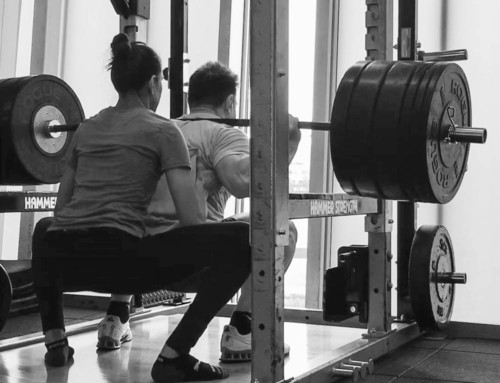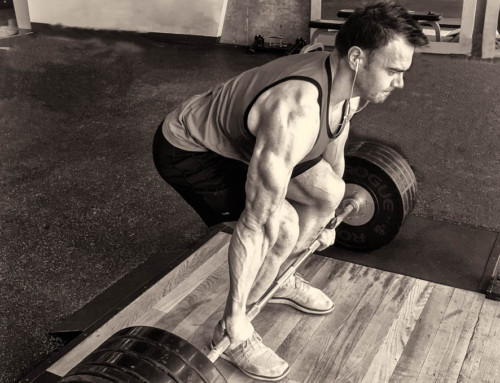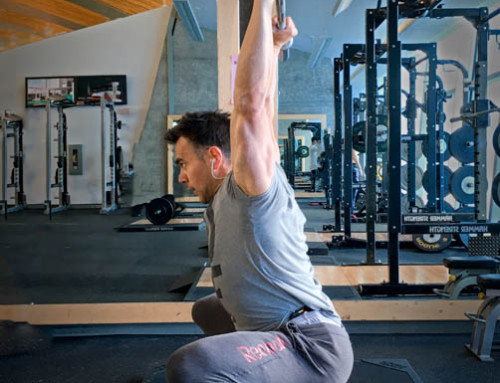During past articles on energy systems, we looked at three biochemical pathways in which body generates energy for any required function. These pathways are: ATP-CP (fastest and 10-15 seconds of major production), Anaerobic Glycolysis (fast and lasting up to 2 minutes), and Oxidative system (slow, generating energy for whole exercise duration). These energy systems utilize chemical compounds derived from food and/or stored within the body. In this article, we’ll discuss energy systems training in reference to parameters and programming considerations.
Energy Systems Training
Energy systems engage at the beginning of any exercise and continuously contribute to overall fuel supply. This contribution is dependent on exercise intensity and duration. Intense physical training intervals greatly engage anaerobic systems – ATP-CP and Anaerobic Glycolysis – as the oxygen supply is unable to meet required energy demands. These systems instantaneously resynthesize ATP however, there is a cost in performance through increased muscle fatigue. Both systems generate byproduct metabolites such as ammonia (ATP-CP) and ADP, Pi, lactate, and hydrogen (H+) ions (Anaerobic glycolysis). All these metabolites accumulate inside the cells cytoplasm and begin to negatively affect performance. As a result, muscles decrease their contractibility as well as production of energy through anaerobic pathways. Such intensity can be sustained for approximately 2 minutes at which point the body establishes a balance between oxygen supply and energy demands.
When the body reaches oxygen to energy production balance, the oxidative system becomes a major energy producer. Here, physical performance still depends on training intensity and duration. With decrease in mechanical overload, the body is able to generate force for longer time periods, slowing down accumulation of fatigue.
Programming Energy Systems Training
Successful strength and conditioning protocols are designed to accumulate fatigue. Greater fatigue is used to raise metabolic stress heightening body’s adaptation response through increased recovery. Biochemical processes such as hormone release, water retention (cell swelling through osmosis due to intracellular increase in lactate), muscle fiber recruitment and hypertrophy are all elevated as a result of metabolic stress. Consecutive training sessions build up overall fatigue, raising body efficiency through metabolic response and recovery. Research suggests that energy systems, like other internal processes have adaptation capabilities. Studies show both anaerobic systems (ATP-CP and Anaerobic Glycolysis) can be further developed by 20%. Oxidative system is capable of even greater improvements for up to 50% noted in novice trainees.
So, how do these numbers relate to us? Energy systems training, just like any other style of training should be goal oriented. Training for aerobic or anaerobic development is not a goal but the means in becoming more efficient and effective towards your goal. Increasing your squat or deadlift by 100 lbs (~ 45 kg) is different from decreasing body fat by 10%; which is also different from improving your time in a 10 km (~ 6.2 miles) run.
Having said that, we are unable to selectively train one specific energy pathway over another. Just as in muscular hypertrophy, energy systems turn on simultaneously at the beginning of any type of activity. Following, they increase or decrease their participation depending on exercise intensity. If the exercise is light, ATP-CP still engages right at the start. The reverse is also the case during maximum intensity training as low oxygen levels are still used by Oxidative system resynthesizing ATP at minimal rate, but gathering its contribution as time goes on.
Anaerobic Training 
First of, there is a disconnect within the phrase Anaerobic Training. True high-intensity protocols are very difficult and taxing on any system. Many people speak of doing “Tabata” protocols and alike but in reality do not match the effort with intensity required for this type of training. True “Tabata” is a 20 seconds on and 10 seconds off all-out maximum effort. Such session is performed at 170% of VO2max during “on” intervals and completed for 8 rounds (4 minutes total). This is an incredibly high level of intensity that most people simply will not able, nor willing to match.
In real Tabata, acidosis rapidly builds through accumulation of anaerobic pathway byproduct metabolites. This causes a burning sensation within your muscles while generating significant muscle fatigue. Fatigue affects muscular contractibility, motor unit recruitment, and effectiveness of Anaerobic glycolysis to continuously resynthesize ATP. The result is, the sensation of working muscles rapidly become like bricks, decreasing their force production and exercise intensity. So even if you have mental fortitude to withstand such intensity, the body will begin to shut down well before the mind.
Having said that, anaerobic lactic system can and should be trained. Since most of our goals orient around health, fitness, greater lean body mass and lower body fat; the programming should encompass more of a hybrid approach. Training intensity should vary within medium to medium/high levels, often incrementally served in building blocks through pyramid fashion. This style of training will also generate fatigue, muscle soreness (DOMS) however, such discomfort is worth the effort as this approach is the most effective method of increasing lean body mass while losing fat. Glycolytic system will be the major energy contributor generating a significant “metabolic disturbance,” boosting Excess Post-Execise Oxygen Consumption (EPOC). Energy for all recovery reactions and processes will involve all three systems with aerobic pathway being the major contributor.
The most common method of anaerobic training is through repetition of medium-high effort activity, with less than complete recovery periods – HIIT (High Intensity Interval Training). The typical training setup includes 20 to 40-second sprints on foot (400 meters or less), in a pool or on a bike, with a minute of rest between them. For strength training, performing sets of eight to twelve reps lasting 20 to 40 seconds, with rest periods of two minutes or less. Popular design of such sessions is to incrementally pyramid set intensity up and then down, while utilizing warm up and cool down periods at both ends of the exercise bout.
Aerobic Training
An effective oxidative system is not only good at utilizing sugar and fat as fuel, but also switching between these substrates quickly and effectively; in order to continue generating energy on demand. This includes utilizing available glucose and free fatty acids (FFAs) in bloodstream as well as stored forms in adipose tissue and glycogen.
Any continuous activity – from mid-distance running of triathlons, basketball, soccer – requires a well developed aerobic capacity. Aerobic development is lower intensity and often overlooked when considering performance oriented programs. Aerobic training within low-medium, and medium difficulty exercises should be implemented especially for beginners to build a better energy deriving foundation. Oxidative system is very responsive to exercise and can be trained in variety of ways. The better it is developed, the more effective it burns fat during and post physical performance.
Aerobic system is continuously active and produces the most energy of the three systems. But, the process of converting carbohydrates and fat into usable energy takes time. However, once it gains momentum it becomes body’s major energy source over longer time periods. For example, during a 10 second sprint aerobic system contributes about 13% of necessary energy, but on an intense four-minute run that figure rises to 80%. Oxidative system increases its energy production fairly fast becoming an equal 50/50 participant around 70 seconds mark of on-going physical activity. It also plays a greater role in recovery after high-intensity, and maximal effort lifts or sprints.
Aerobic system not only responds after intense training, it also supports such exercise protocols. Strength training workouts resemble a series of escalating waves of effort for the oxidative system. By performing second, third and fourth set before full recovery, the oxidative system continues to engage, improving its effectiveness. During and post training majority of recovery processes – replenishment of creatine-phosphate (CP) and glycogen stores, muscular hypertrophy process, and removal of metabolite byproducts – are performed using energy predominantly derived through aerobic system. As mentioned earlier, this process is referred to as excess post-exercise oxygen consumption (EPOC), which can be attained through passive or active recovery of continuous low-intensity aerobic session.
Oxidative system is involved in virtually any style of training systems (whether directly providing energy supply or in form of recovery) where the body improves overall blood circulation, oxygenation, nutrient delivery and removal of byproducts. From standard cardio with light resistance to high intensity anaerobic protocols all engage aerobic system in some shape or form.
Final Thoughts
ATP-CP, Anaerobic Glycolysis, and Oxidative system are three pathways the body uses to produce required energy. These systems do not initiate in sequence but simultaneously turn on with any form of activity. Energy systems training is an important method in improving performance and achieving specific goals.
For health and fitness goals, effective energy systems training should include a combination regime engaging all three pathways contributing towards energy demands. Structuring training in bouts comprised of work/rest intervals, while pyramiding up the intensity is a practical approach to engage and develop adaptations for all three systems during and post activity. Recovery is an important part of any program where energy supply is increased through oxidative system via EPOC.
If you liked this article, please share this knowledge. As well, you may be in interested in learning more about our Stronger Leaner Faster Training Books – designed around training energy systems.





